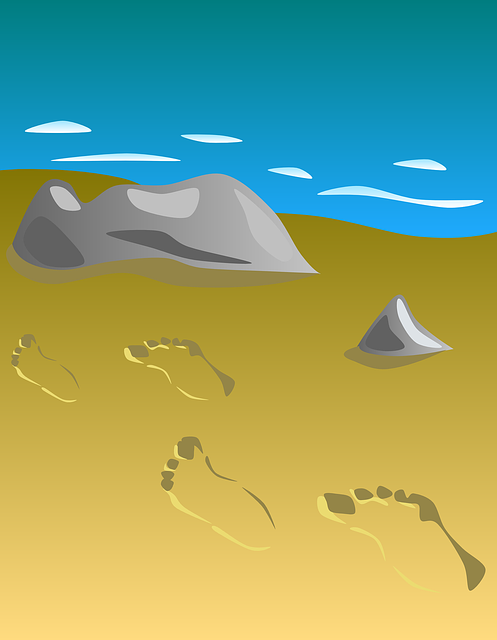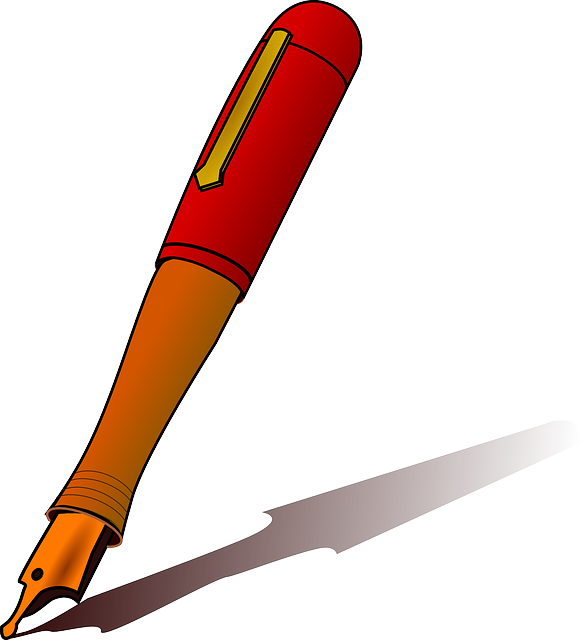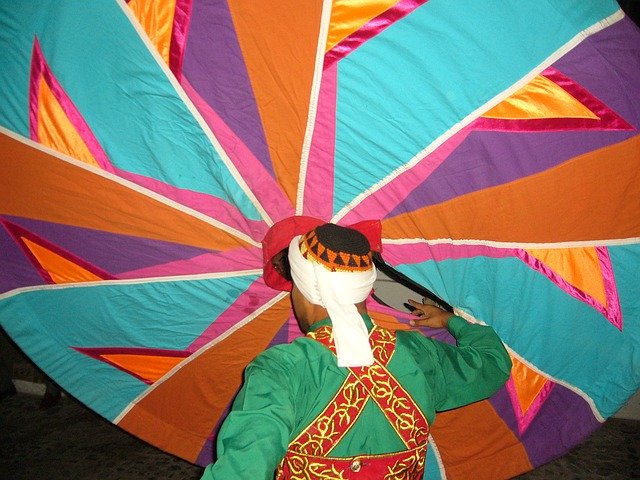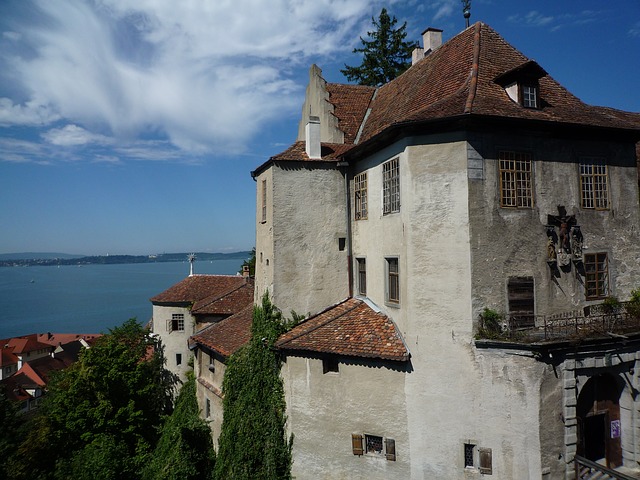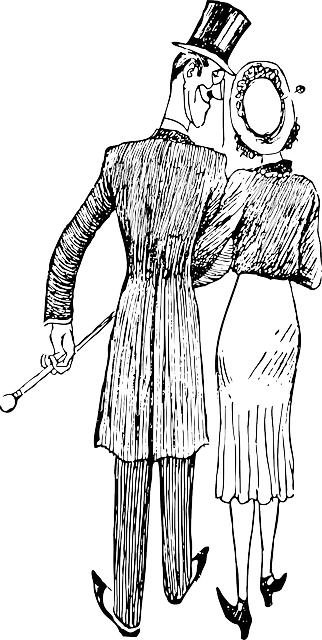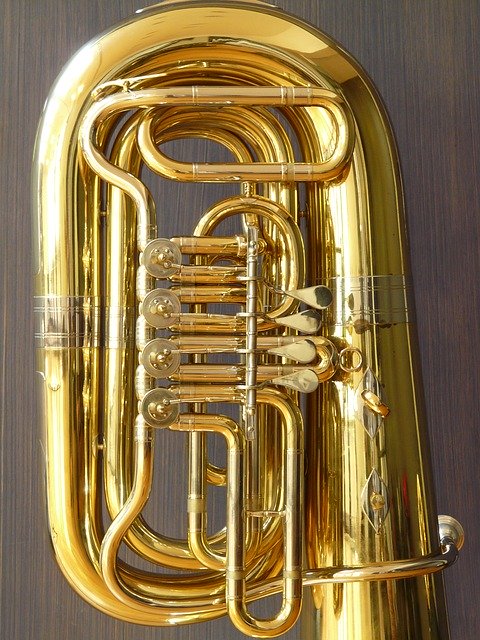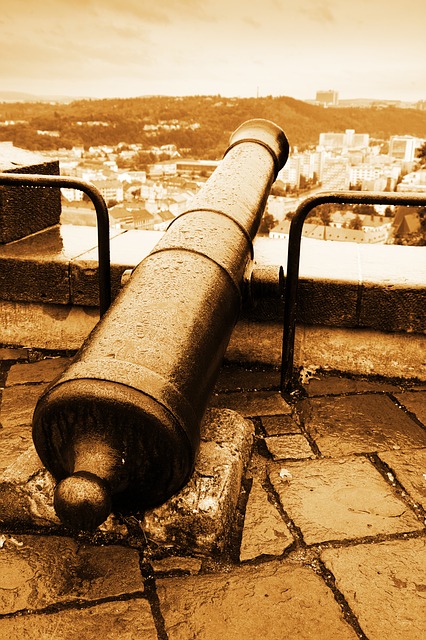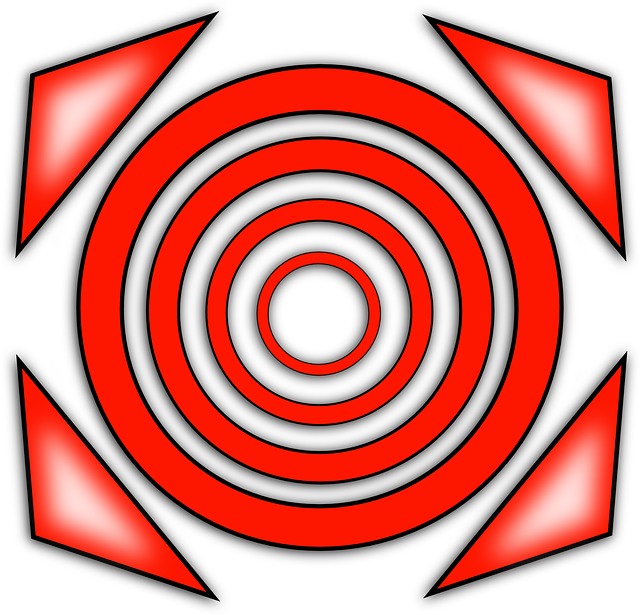أسرة هان
| ||||||||||||||||||||||||||||||||||||||||||||||||||||||||||||||||||||||||||||||||||||||||||||||||||||||||||||||||||||||||||||||||||||||||||||||||||||||||||||||||||||||||||||||||||||||||||||||||||||||||||||||||||||||||||||||||||||||||||||||||||||||||||||||||||||||||||
| ||||||||||||||||||||||||||||||||||||||||||||||||||||||||||||||||||||||||||||||||||||||||||||||||||||||||||||||||||||||||||||||||||||||||||||||||||||||||||||||||||||||||||||||||||||||||||||||||||||||||||||||||||||||||||||||||||||||||||||||||||||||||||||||||||||||||||
أسرة هان (الصينية المبسطة: 汉朝; الصينية التقليدية: 漢朝; پنين: Hàn Cháo; ويد-جايلز: Han Ch'ao؛ استمرت من 206 ق.م. حتى 220 م) سلسلة من الأباطرة حكمت الصين لمدة تزيد على 400 سنة. وازدهرت تحت حكم آل هان، العلوم والآداب، وأصبحت الصين واسعة وقوية مثل الإمبراطورية الرومانية، ولا يزال الصينيون يسمّون أنفسهم آل هان، وذلك اعترافًا بالإنجازات التي حققتها الصين خلال تلك الفترة.
|
هذه الموضوعة تحتوي على نصوص بالصينية. بدون دعم الإظهار المناسب, فقد ترى علامات استفهام ومربعات أورموز أخرى بدلاً من الحروف الصينية. |
التاريخ
أعقب موت شي هوانج دي عهد من الفوضى والاضطراب كما تعقب الفوضى والاضطراب موت الطغاة جميعهم تقريباً في أحقاب التاريخ كلها. ذلك أنه في وسع إنسان أياً كان حتى يجمع السلطة كلها في يده ويحسن التصرف فيها. وثار الشعب إلى ابنه وقتله بعد حتى اغتال هولي سيوبقليل، وقضى على أسرة تشين، ولم يمض على وفاة مؤسسها أكثر من خمس سنين. وأقام الأمراء المتنافسون ممالك متنافسة متعادية وساد الاضطراب من جديد. ودامت هذه الحال حتى اغتصب العرش زعيم عسكري مغامر مرتزق يدعى جو- دزو، وأسس أسرة هان التي ظلت تحكم البلاد أربعمائة عام كاملة، تخللتها فترات أنزلت فيها عن العرش، وتبدلت فيها العاصمة مرة واحدة . وأعاد ون - دي (179-75 ق.م.) إلى الشعب حرية القول والكتابة، وألغي المرسوم الذي حرم به هونج - دي انتقاد الحكومة، وجرى على سياسة السلم، وابتدع العادة الصينية المأثورة عادة هزيمة قائد الجيش العدوبتقديم الهدايا إليه.
وكان وو- دي أعظم الأباطرة من أسرة هان؛ وقد حكم البلاد زهاء نصف قرن (140-87 ق.م.) وصد البرابرة المغيرين، وبسط حكم الصين على كوريا ومنشوريا وأنام، والهند الصينية والهجرستان، وضمت الصين - لأول مرة في التاريخ جميع الأنطقيم الشاسعة التي تعودنا حتى نقرنها باسمها. وأخذ وو- دي يقوم بتجارب في الاشتراكية، فجعل موارد الثروة الطبيعية ملكاً للامة، وذلك ليمنع الأفراد "أن يختصوا أنفسهم بثروة الجبال والبحار، ليجنوا من ورائها الأموال الطائلة، ويخضعوا لهم الطبقات الدنيا. واحتكرت الدولة استخراج الملح والحديد وعصر الخمور وبيعها. وأراد وو- دي - كما يقول معاصره زوماتشين - حتى يقضي على سلطان الوسطاء والمضاربين "الذين يشترون البضائع نسيئة، ويعقدون القروض، والذين يشترون ليكدسوا ما يشترونه في المدن، والذين يخزنون جميع أنواع السلع"، فأنشأ نظاماً قومياً للنقل والتبادل تشرف عليه الدولة، وسعى للسيطرة على التجارة حتى يستطيع منع تقلب الأسعار الفجائي. فكان عمال الدولة هم الذين يتولون شئون نقل البضائع وتوصيلها إلى أصحابها في جميع أنحاء البلاد. وكانت الدولة نفسها تخزن ما زاد من السلع على حاجة الأهلين، وتبيعها إذا أخذت أثمانها في الارتفاع فوق ما يجب، كما كانت تشتريها إذا تقلصت الأسعار وبهذه الطريقة كان "أغنياء التجار وأصحاب المتاجر الكبيرة يمنعون من حتى يجنوا الأرباح الطائلة... وكانت الأسعار تنظم وتتوازن في جميع أنحاء الإمبراطورية". وكان ولج الأفراد كله يسجل في سجلات حكومية وتؤدى عنه ضريبة مقدارها خمسة في المائة. وكان الأمير يسك النقود المصنوعة من الفضة مخلوط بالقصدير لتكثر في أيدي الناس فيسهل عليهم شراء البضائع واستهلاكها. وشرع يقيم المنشآت العامة العظيمة ليوجد بذلك عملاً لملايين الناس الذين عجزت الصناعات الخاصة عن استيعابهم، فأنشئت الجسور على أنهار الصين وحفرت قنوات لا حصر لها لربط الأنهار بعضها ببعض وإرواء الحقول وازدهر النظام الجديد وأفلح إلى حين، وراجت التجارة، وكثرت البضائع وتنوعت، وارتبطت الصين مع الأمم المجاورة لها ومع أمم الشرق الأدنى البعيدة عنها(20). وكثر سكان عاصمتها لو- يانج وزادت ثروتها وامتلأت خزائن الدولة بالأموال، وانتشر طلاب الفهم في جميع مكان، وكثر الشعراء، وبدأ الخزف الصيني يتخذ منظراً جميلاً جذاباً. وجمع في المخطة الإمبراطورية 3,123 مجلداً في الأدب الصيني القديم، و705ر2 في الفلسفة، و388ر1 في الشعر، و568ر2 في الرياضيات، و868 في الطب، و790 في فنون الحرب(21). ولم يكن أحد يعين في مناصب الدولة إلا إذا اجتاز امتحاناً تضعه لهذا الغرض، وكانت هذه الامتحانات عامة يتقدم إليها جميع من شاء. والحق حتى الصين لم يمر بها عهد من الرخاء كالذي مر بها تلك الأيام.
ولكن طائفة من الكوارث الطبيعية مضافاً إليها خبث بني الإنسان قضت على هذه التجربة الجريئة. فقد تعاقبت على البلاد سنون من الفيضان والجدب ارتفعت على أثرها أسعار السلع ارتفاعاً لم تقوالحكومة على وقفه. وتضايق الناس من غلوأثمان الطعام والكساء فصاحوا يطالبون بالعودة إلى الأيام الحلوة الماضية، التي أضحت في اعتقادهم خير الأيام وأكثرها رخاء، وأشاروا بأن يُغلى مقترح النظام الجديد في الماء وهوحي، ونادى رجال الأعمال بأن سيطرة الدولة قضت على الابتكار الفردي السليم وعلى التنافس الحر، وأبوا حتى يؤدوا ما يلزم لهذه التجارب من الضرائب الباهظة التي كانت الحكومة تفرضها عليهم(22). ودخلت النساء بلاط الإمبراطور وبسطن نفوذهن السرى على كبار الموظفين، وأصبحن عنصراً هاماً في الموجة من الفساد انتشرت في طول البلاد وعرضها بعد وفاة الإمبراطور(23). وأخذ المزيفون يقلدون العملة الجديدة ونجحوا في تقليدها إلى حد اضطر الحكومة إلى سحبها من أيدي الناس، وعادت الخطة القديمة خطة استغلال الضعفاء، يسيطر عليها نظام جديد، ومضى قرن من الزمان نسيت فيه إصلاحات وودي أوأضحت مسبة له وعاراً.
وجلس على عرش الصين مصلح آخر في بداية التاريخ المسيحي بعد أربعة وثمانين عاماً من موت وودي، وكان في بادئ الأمر وصياً على العرش ثم أصبح فيما بعد إمبراطوراً. وكان هذا الإمبراطور وانج مانج من أرقى طراز وصل إليه الرجل الصيني الكامل المهذب؛ وكان على غناه يعيش عيشة معتدلة بل عيشة مقتصدة، ويوزع دخله على أقاربه وعلى الفقراء من أهل البلاد . وقد قضى جل وقته يكافح لإعادة النظام إلى أحوال البلاد الاقتصادية والسياسية، ولكنه مع ذلك عثر فسحة من الوقت لا لمناصرة الأدب والفهم فحسب بل للاشتغال بهما بنفسه حتى أصبح من أكمل الناس ثقافة وتهذيباً؛ ولما جلس على سرير المُلك لم يحط نفسه بما يحيط به الملوك أنفسهم من الساسة، بل جمع حوله رجالاً من الأدباء والفلاسفة، وإلى هؤلاء الرجال يعزوأعداؤه مسببات إخفاقه، وإليهم يعزوأصدقاؤه مسببات نجاحه.
وروع وانج مانج في بداية حكمه انتشار الرق في ضياع الصين الكبيرة، فلم يكن منه إلا حتى ألغى الرق وألغى الضياع بتأميم الأرض الزراعية، فقسمها بتراً متساوية ووزعها على الزراع، ثم حرم بيع الأرض وشراؤها ليمنع بذلك عودة الأملاك الواسعة إلى ما كانت عليه من قبل. واحتفظ باحتكار الدولة للملح والحديد وأضاف إلى ذلك امتلاكها للمناجم وإشرافها على تجارة الخمور.
وحاول كما حاول وودي حتى يحمي الزراع والمستهلكين من جشع التجار بتحديد أثمان السلع. فكانت الدولة تشتري ما زاد على الحاجة من الحاصلات الزراعية وتبيعها إذا عزت وغلا ثمنها. وكانت الحكومة تقدم القروض بفائدة منخفضة لكل مشروع إنتاجي.
لكن وانج لم يفكر في خططه إلا من الناحية الاقتصادية ونسي طبائع الآدميين. فكان يعمل الساعات الطوال بالليل والنهار ليبتكر الخطط التي تزيد ثروة الأمة وأسباب سعادتها، ولكن أحزنه وأضرم قلبه حتى عثر الاضطراب الاجتماعي ينتشر في البلاد في أثناء حكمه. فقد ظلت الكوارث الطبيعية كالفيضان والجدب تعطل مشروعاته الاقتصادية، واجتمعت جميع الطوائف التي قضت هذه المشروعات على مطاعمها وأخذت تكيد له وتعمل لإسقاطه. فثار نقع الفتن في البلاد يصلت سيفها الشعب في الظاهر، ولكن أكبر الظن حتى القائمين بها كانوا يتلقون الأموال من مصادر عليا. وبينما كان وانج يكافح ليقلم أظفار هذه الفتن، وقد ساءه كفر الشعب بفضله وجحوده بنعمته، إذ أخذت الشعوب الخاضعة لسلطان الصين تشق عصا الطاعة، كما أخذ برابرة الشيونج - نويجتاحون الولايات الشمالية، فأضعف ذلك كله من هيبة الإمبراطور.
وتزعمت أسرة ليوالغنية ثورة عامة اندلع لهيبها في البلاد واستولت على شانج - آن، وقتلت وانج مانج، وألغت جميع إصلاحاته، وعاد جميع شيء إلى ما كان عليه من قبل. وجلس على العرش في أواخر أيام أسرة هان جماعة من الأباطرة الضعاف خاف بعضهم بعضاً، وانتهى بهم عهد هذه الأسرة؛ وأعقب ذلك عهد من الفوضى حكمت في أثنائه أسر خاملة الذكر، انقسمت البلاد في أيامها إلى دويلات متعددة. وتدفق التتار على البلاد ولم يصدهم عنها السور على مساحات واسعة من أجزائها الشمالية، وكانت غارات هؤلاء التتار سبباً في اضطراب حياة الصين والقضاء على حضارتها النامية، كما كانت غارات الهون الذين يمتون إلى التتار بأواصر القرابة العنصرية سبباً في اضطراب نظام الإمبراطور الرومانية وإلقاء أوربا في غمار الفوضى التي أرجعها نحومائة عام كاملة. وفي وسعنا حتى ندرك ما يمتاز به الصينيون من صلابة عنصرية، ومن قوة في الأخلاق والثقافة، إذا عهدنا حتى هذا الاضطراب كان أقصر أجلاً وأقل عمقاً من الاضطراب الذي قضى على الدولة الرومانية. فلما حتى انقضى عهد من الحروب والفوضى والامتزاج العنصري بين المغيرين والأهلين، أفاقت الحضارة الصينية من سباتها، وانتعشت انتعاشاً رائعاً يبهر الأنظار.
ولعل دم التتار الجديد قد بعث القوة في أمة كانت قد أدركتها الشيخوخة. وقبل الصينيون الغزاة الفاتحين بينهم، وتزوجوا منهم، وحضروهم، وارتقوا هم وإياهم إلى أسمى ما بلغوه من المجد في تاريخهم الطويل.
هان الغربية
وقد أنشأ ليوبانج أسرة هان عام 202ق.م، وذلك بعد سقوط أسرة شن. انظر:ليوبانج. وقد انقسم حكم آل هان إلى فترتين حيث استمرت أسرة هان الأولى من عام 202ق.م إلى عام 8م، وكانت عاصمتهم شانجان (أكسيان حاليًا)، أما أسرة هان الثانية، فقد عاشت من عام 25م إلى 220م، وكانت عاصمتها لويانج. ونظرًا لوقوع شانجان إلى الغرب من لويانج، فقد كانت الفترتان تسميان فترة حكم أسرة هان الشرقية والغربية. وحكم الصين من عام 8م إلى 23م رجل ثائر يدعى وانج هانج، وهوالذي أسّس أسرة هسين. وبعد سقوط أسرة هسين، استعادت أسرة هان السلطة. وأصبح لأباطرة هان بعد سقوط أسرة ليوسلطة مركزية قوية، وتقلد الفهماء الكنفوشيون مناصب حكومية مهمة، وقد جعل الإمبراطور وودي الكنفوشية فلسفة الدولة الرسمية إبان حكم الفترة من 140 إلى 87 ق.م.
تم بناء جامعة مركزية في شمانفان إبان حكم أسرة هان. وقد قام كُتاب الشعر والنثر في عهد أسرة هان باتباع أسلوب واضح لايزال مشهورًا حتى الآن، وخط الفهماء تاريخًا مطوَّلاً للصين، وقام الفنَّانون بإنتاج خزف زجاجي ومنحوتات حجرية كبيرة الحجم.
وقد امتدت الصين في عهد أسرة هان إلى الجنوب الغربي حتى وصلت إلى مايسمَّى بالتيبت حاليًا. واحتل مقاتلوهان ما يسمَّى حاليًا كوريا الشمالية وفيتنام الشمالية، وسيطروا على القبائل البدوية في الشمال والغرب. ربطت طرق التجارة البرية مابين أوروبا والصين، وذلك لأول مرة. ومن أشهر تلك الطرق طريق الحرير العظيم، وقد أُدخل الحرير الصيني ومنتجات أخرى إلى الإمبراطورية الرومانية عبر هذا الطريق.
هان الشرقية
Right image: Reverse side of a Western-Han bronze mirror with painted designs of a flower motif
نهاية الهان
انهارت أسرة هان بسبب الصراع بين الفهماء أوذوي المناصب الرسمية، وأعضاء الأسرة الإمبراطورية، والمستشارين وجنرالات الجيش. وخلال القرون الأربعة التي تلت هذه الخلافات انقسمت الصين إلى دويلات متناحرة.
الخصيان في شئون الدولة
المجتمع والثقافة
الطبقات الاجتماعية
الزواج والجنوسة والقرابة
Right image: A Han pottery female dancer in silk robes
التعليم والأدب والفلسفة
القانون والنظام
المطبخ
الدين والكون والميتافيزيقا
الحكومة
الحكومة المركزية
الحكم المحلي
الممالك وmarquessates
الجيش
الاقتصاد
تنويعات العملات
Right image: A painted ceramic architectural model—found in an Eastern-Han tomb at Jiazuo, Henan province—depicting a fortified manor with towers, a courtyard, verandas, tiled rooftops, dougong support brackets, and a covered bridge extending from the third floor of the main tower to the smaller watchtower.
الصناعات الخاصة والاحتكارات الحكومية
العلوم والتكنولوجيا والهندسة
مواد الكتابة
التعدين والزراعة
الهندسة الإنشائية
الهندسة الميكانيكية والهيدروليكية
الرياضيات
الفلك
رسم الخرائط والسفن والمركبات
الطب
انظر أيضاً
|
|
الهامش
|
المصادر
- Adshead, Samuel Adrian Miles. (2000). China in World History. London: MacMillan Press Ltd. New York: St. Martin's Press. ISBN 0312225652.
- Akira, Hirakawa. (1998). A History of Indian Buddhism: From Sakyamani to Early Mahayana. Translated by Paul Groner. New Delhi: Jainendra Prakash Jain At Shri Jainendra Press. ISBN 8120809556.
- An, Jiayao. (2002). "When Glass Was Treasured in China," in Silk Road Studies VII: Nomads, Traders, and Holy Men Along China's Silk Road, 79–94. Edited by Annette L. Juliano and Judith A. Lerner. Turnhout: Brepols Publishers. ISBN 2503521789.
- Bailey, H. W. (1985). Indo-Scythian Studies being Khotanese Texts Volume VII. H. W. Bailey. Cambridge University Press.
- Balchin, Jon. (2003). Science: 100 Scientists Who Changed the World. New York: Enchanted Lion Books. ISBN 1592700179.
- Barbieri-Low, Anthony J. (2007). Artisans in Early Imperial China. Seattle & London: University of Washington Press. ISBN 0295987138.
- Beck, Mansvelt. (1986). "The Fall of Han," in The Cambridge History of China: Volume I: the Ch'in and Han Empires, 221 B.C. – A.D. 220, 317–376. Edited by Denis Twitchett and Michael Loewe. Cambridge: Cambridge University Press. ISBN 0521243270.
- Berggren, Lennart, Jonathan M. Borwein, and Peter B. Borwein. (2004). Pi: A Source Book. New York: Springer. ISBN 0387205713.
- Bielenstein, Hans. (1980). The Bureaucracy of Han Times. Cambridge: Cambridge University Press. ISBN 0521225108.
- Bielenstein, Hans. (1986). "Wang Mang, the Restoration of the Han Dynasty, and Later Han," in The Cambridge History of China: Volume I: the Ch'in and Han Empires, 221 B.C. – A.D. 220, 223–290. Edited by Denis Twitchett and Michael Loewe. Cambridge: Cambridge University Press. ISBN 0521243270.
- Block, Leo. (2003). To Harness the Wind: A Short History of the Development of Sails. Annapolis: Naval Institute Press. ISBN 1557502099.
- Bower, Virginia (2005). "Standing man and woman," in Recarving China's Past: Art, Archaeology, and Architecture of the 'Wu Family Shrines', 242–245. Edited by Naomi Noble Richard. New Haven and London: Yale University Press and Princeton University Art Museum. ISBN 0300107978.
- Bowman, John S. (2000). Columbia Chronologies of Asian History and Culture. New York: Columbia University Press. ISBN 0231110049.
- Buisseret, David. (1998). Envisioning the City: Six Studies in Urban Cartography. Chicago: University Of Chicago Press. ISBN 0226079937.
- Bulling, A. "A Landscape Representation of the Western Han Period," Artibus Asiae (Volume 25, Number 4, 1962): pp. 293–317.
- Chang, Chun-shu. (2007). The Rise of the Chinese Empire: Volume II; Frontier, Immigration, & Empire in Han China, 130 B.C. – A.D. 157. Ann Arbor: University of Michigan Press. ISBN 0472115340.
- Ch'en, Ch'i-Yün. (1986). "Confucian, Legalist, and Taoist Thought in Later Han," in Cambridge History of China: Volume I: the Ch'in and Han Empires, 221 B.C. – A.D. 220, 766–806. Edited by Denis Twitchett and Michael Loewe. Cambridge: Cambridge University Press. ISBN 0521243270.
- Ch'ü, T'ung-tsu. (1972). Han Dynasty China: Volume 1: Han Social Structure. Edited by Jack L. Dull. Seattle and London: University of Washington Press. ISBN 0295950684.
- Chung, Chee Kit. (2005). "Longyamen is Singapore: The Final Proof?," in Admiral Zheng He & Southeast Asia. Singapore: Institute of Southeast Asian Studies. ISBN 9812303294.
- Cotterell, Maurice. (2004). The Terracotta Warriors: The Secret Codes of the Emperor's Army. Rochester: Bear and Company. ISBN 159143033X.
- Csikszentmihalyi, Mark. (2006). Readings in Han Chinese Thought. Indianapolis and Cambridge: Hackett Publishing Company, Inc. ISBN 0872207102.
- Cullen, Christoper. (2006). Astronomy and Mathematics in Ancient China: The Zhou Bi Suan Jing. Cambridge: Cambridge University Press. ISBN 0521035376.
- Cutter, Robert Joe. (1989). The Brush and the Spur: Chinese Culture and the Cockfight. Hong Kong: The Chinese University of Hong Kong. ISBN 9622014178.
- Dauben, Joseph W. (2007). "Chinese Mathematics" in The Mathematics of Egypt, Mesopotamia, China, India, and Islam: A Sourcebook, 187–384. Edited by Victor J. Katz. Princeton: Princeton University Press. ISBN 0691114854.
- Davis, Paul K. (2001). 100 Decisive Battles: From Ancient Times to the Present. New York: Oxford University Press. ISBN 0195143663.
- Day, Lance and Ian McNeil. (1996). Biographical Dictionary of the History of Technology. New York: Routledge. ISBN 0415060427.
- de Crespigny, Rafe. (2007). A Biographical Dictionary of Later Han to the Three Kingdoms (23–220 AD). Leiden: Koninklijke Brill. ISBN 9004156054.
- Demiéville, Paul. (1986). "Philosophy and religion from Han to Sui," in Cambridge History of China: Volume I: the Ch'in and Han Empires, 221 B.C. – A.D. 220, 808–872. Edited by Denis Twitchett and Michael Loewe. Cambridge: Cambridge University Press. ISBN 0521243270.
- Deng, Yingke. (2005). Ancient Chinese Inventions. Translated by Wang Pingxing. Beijing: China Intercontinental Press (五洲传播出版社). ISBN 7508508378.
- Di Cosmo, Nicola. (2002). Ancient China and Its Enemies: The Rise of Nomadic Power in East Asian History. Cambridge: Cambridge University Press. ISBN 0521770645.
- Dorn'eich, Chris M. (2008). Chinese sources on the History of the Niusi-Wusi-Asi(oi)-Rishi(ka)-Arsi-Arshi-Ruzhi and their Kueishuang-Kushan Dynasty. Shiji 110/Hanshu 94A: The Xiongnu: Synopsis of Chinese original Text and several Western Translations with Extant Annotations. Berlin. To read or download go to: [1]
- Ebrey, Patricia. "Estate and Family Management in the Later Han as Seen in the Monthly Instructions for the Four Classes of People," Journal of the Economic and Social History of the Orient, Vol. 17, No. 2 (May, 1974): pp. 173–205.
- Ebrey, Patricia. (1986). "The Economic and Social History of Later Han," in Cambridge History of China: Volume I: the Ch'in and Han Empires, 221 B.C. – A.D. 220, 608–648. Edited by Denis Twitchett and Michael Loewe. Cambridge: Cambridge University Press. ISBN 0521243270.
- Ebrey, Patricia (1999). The Cambridge Illustrated History of China. Cambridge: Cambridge University Press. ISBN 052166991X.
- Fairbank, John K. and Merle Goldman. (1998). China: A New History, Enlarged Edition. Cambridge: Harvard University Press. ISBN 0674116739.
- Greenberger, Robert. (2006). The Technology of Ancient China. New York: Rosen Publishing Group, Inc. ISBN 1404205586.
- Guo, Qinghua. (2005). Chinese Architecture and Planning: Ideas, Methods, and Techniques. Stuttgart and London: Edition Axel Menges. ISBN 3932565541.
- Hansen, Valerie. (2000). The Open Empire: A History of China to 1600. New York & London: W.W. Norton & Company. ISBN 0393973743.
- Hardy, Grant. (1999). Worlds of Bronze and Bamboo: Sima Qian's Conquest of History. New York: Columbia University Press. ISBN 0231113048.
- Hill, John E. (2009) Through the Jade Gate to Rome: A Study of the Silk Routes during the Later Han Dynasty, 1st to 2nd Centuries CE. John E. Hill. BookSurge, Charleston, South Carolina. ISBN 978-1-4392-2134-1.
- Hinsch, Bret. (2002). Women in Imperial China. Lanham: Rowman & Littlefield Publishers, Inc. ISBN 0742518728.
- Hsu, Cho-Yun. "The Changing Relationship between Local Society and the Central Political Power in Former Han: 206 B.C. –ثمانية A.D.," Comparative Studies in Society and History, Vol. 7, No. أربعة (Jul., 1965): pp. 358–370.
- Hsu, Elisabeth. (2001). "Pulse diagnostics in the Western Han: how mai and qi determine bing," in Innovations in Chinese Medicine, 51–92. Edited by Elisabeth Hsu. Cambridge, New York, Oakleigh, Madrid, and Cape Town: Cambridge University Press. ISBN 0521800684.
- Hsu, Mei-ling. "The Qin Maps: A Clue to Later Chinese Cartographic Development," Imago Mundi (Volume 45, 1993): pp. 90–100.
- Huang, Ray. (1988). China: A Macro History. Armonk & London: M.E. Sharpe Inc., an East Gate Book. ISBN 0873324528.
- Hulsewé, A.F.P. (1986). "Ch'in and Han law," in The Cambridge History of China: Volume I: the Ch'in and Han Empires, 221 B.C. – A.D. 220, 520–544. Edited by Denis Twitchett and Michael Loewe. Cambridge: Cambridge University Press. ISBN 0521243270.
- Jin, Guantao, Fan Hongye, and Liu Qingfeng. (1996). "Historical Changes in the Structure of Science and Technology (Part Two, a Commentary)" in Chinese Studies in the History and Philosophy of Science and Technology, 165–184, edited by Fan Dainian and Robert S. Cohen, translated by Kathleen Dugan and Jiang Mingshan. Dordrecht: Kluwer Academic Publishers. ISBN 0792334639.
- Kramers, Robert P. (1986). "The Development of the Confucian Schools," in Cambridge History of China: Volume I: the Ch'in and Han Empires, 221 B.C. – A.D. 220, 747–756. Edited by Denis Twitchett and Michael Loewe. Cambridge: Cambridge University Press. ISBN 0521243270.
- Lewis, Mark Edward. (2007). The Early Chinese Empires: Qin and Han. Cambridge: Harvard University Press. ISBN 067402477X.
- Liu, Xujie (2002). "The Qin and Han Dynasties" in Chinese Architecture, 33–60. Edited by Nancy S. Steinhardt. New Haven: Yale University Press. ISBN 0300095597.
- Liu, Guilin, Feng Lisheng, Jiang Airong, and Zheng Xiaohui. (2003). "The Development of E-Mathematics Resources at Tsinghua University Library (THUL)" in Electronic Information and Communication in Mathematics, 1–13. Edited by Bai Fengshan and Bern Wegner. Berlin, Heidelberg, and New York: Springer Verlag. ISBN 3540406891.
- Lloyd, Geoffrey Ernest Richard. (1996). Adversaries and Authorities: Investigations into Ancient Greek and Chinese Science. Cambridge: Cambridge University Press. ISBN 0521556953.
- Lo, Vivienne. (2001). "The influence of nurturing life culture on the development of Western Han acumoxa therapy," in Innovation in Chinese Medicine, 19–50. Edited by Elisabeth Hsu. Cambridge, New York, Oakleigh, Madrid, and Cape Town: Cambridge University Press. ISBN 0521800684.
- Loewe, Michael. (1968). Everyday Life in Early Imperial China during the Han Period 202 BC–AD 220. London: B.T. Batsford Ltd.; New York: G.P. Putnam's Sons. ISBN 0872207587.
- Loewe, Michael. (1986). "The Former Han Dynasty," in The Cambridge History of China: Volume I: the Ch'in and Han Empires, 221 B.C. – A.D. 220, 103–222. Edited by Denis Twitchett and Michael Loewe. Cambridge: Cambridge University Press. ISBN 0521243270.
- Loewe, Michael. (1994). Divination, Mythology and Monarchy in Han China. Cambridge, New York, and Melbourne: Cambridge University Press. ISBN 0521454662.
- Loewe, Michael. (2005). "Funerary Practice in Han Times," in Recarving China's Past: Art, Archaeology, and Architecture of the 'Wu Family Shrines', 23–74. Edited by Naomi Noble Richard. New Haven and London: Yale University Press and Princeton University Art Museum. ISBN 0300107978.
- McClain, Ernest G. and Ming Shui Hung. "Chinese Cyclic Tunings in Late Antiquity," Ethnomusicology, Vol. 23, No. 2 (May, 1979): pp. 205–224.
- Morton, William Scott and Charlton M. Lewis. (2005). China: Its History and Culture: Fourth Edition. New York City: McGraw-Hill. ISBN 0071412794.
- Needham, Joseph. (1972). Science and Civilization in China: Volume 1, Introductory Orientations. London: Syndics of the Cambridge University Press. ISBN 052105799X.
- Needham, Joseph. (1986a). Science and Civilization in China: Volume 3; Mathematics and the Sciences of the Heavens and the Earth. Taipei: Caves Books, Ltd. ISBN 0521058015.
- Needham, Joseph. (1986b). Science and Civilization in China: Volume 4, Physics and Physical Technology; Part 1, Physics. Taipei: Caves Books Ltd. ISBN 0521058023.
- Needham, Joseph. (1986c). Science and Civilisation in China: Volume 4, Physics and Physical Technology; Part 2, Mechanical Engineering. Taipei: Caves Books Ltd. ISBN 0521058031.
- Needham, Joseph. (1986d). Science and Civilization in China: Volume 4, Physics and Physical Technology, Part 3, Civil Engineering and Nautics. Taipei: Caves Books Ltd. ISBN 0521070600.
- Needham, Joseph and Tsien Tsuen-Hsuin. (1986). Science and Civilisation in China: Volume 5, Chemistry and Chemical Technology, Part 1, Paper and Printing. Taipei: Caves Books, Ltd. ISBN 0521086906.
- Neinhauser, William H., Charles Hartman, Y.W. Ma, and Stephen H. West. (1986). The Indiana Companion to Traditional Chinese Literature: Volume 1. Bloomington: Indiana University Press. ISBN 0253329833.
- Nelson, Howard. "Chinese Maps: An Exhibition at the British Library", The China Quarterly (Number 58, 1974): pp. 357–362.
- Nishijima, Sadao. (1986). "The Economic and Social History of Former Han," in Cambridge History of China: Volume I: the Ch'in and Han Empires, 221 B.C. – A.D. 220, 545–607. Edited by Denis Twitchett and Michael Loewe. Cambridge: Cambridge University Press. ISBN 0521243270.
- Norman, Jerry. (1988). Chinese. Cambridge and New York: Cambridge University Press. ISBN 0521296536.
- Omura, Yoshiaki. (2003). Acupuncture Medicine: Its Historical and Clinical Background. Mineola: Dover Publications, Inc. ISBN 0486428508.
- Paludan, Ann. (1998). Chronicle of the Chinese Emperors: the Reign-by-Reign Record of the Rulers of Imperial China. London: Thames & Hudson Ltd. ISBN 0500050902.
- Pigott, Vincent C. (1999). The Archaeometallurgy of the Asian Old World. Philadelphia: University of Pennsylvania Museum of Archaeology and Anthropology. ISBN 0924171340.
- Ronan, Colin A. (1994). The Shorter Science and Civilization in China: 4 (an abridgement of Joseph Needham's work). Cambridge: Cambridge University Press. ISBN 0521329957.
- Schaefer, Richard T. (2008). Encyclopedia of Race, Ethnicity, and Society: Volume 3. Thousand Oaks: Sage Publications Inc. ISBN 1412926947.
- Shen, Kangshen, John N. Crossley and Anthony W.C. Lun. (1999). The Nine Chapters on the Mathematical Art: Companion and Commentary. Oxford: Oxford University Press. ISBN 0198539363.
- Steinhardt, Nancy N. (2005). "Pleasure tower model," in Recarving China's Past: Art, Archaeology, and Architecture of the 'Wu Family Shrines', 275–281. Edited by Naomi Noble Richard. New Haven and London: Yale University Press and Princeton University Art Museum. ISBN 0300107978.
- Steinhardt, Nancy N. (2005). "Tower model," in Recarving China's Past: Art, Archaeology, and Architecture of the 'Wu Family Shrines', 283–285. Edited by Naomi Noble Richard. New Haven and London: Yale University Press and Princeton University Art Museum. ISBN 0300107978.
- Straffin, Philip D., Jr. "Liu Hui and the First Golden Age of Chinese Mathematics," Mathematics Magazine, Vol. 71, No. ثلاثة (Jun., 1998): pp. 163–181.
- Sun, Xiaochun and Jacob Kistemaker. (1997). The Chinese Sky During the Han: Constellating Stars and Society. Leiden, New York, Köln: Koninklijke Brill. ISBN 9004107371.
- Temple, Robert. (1986). The Genius of China: 3,000 Years of Science, Discovery, and Invention. With a forward by Joseph Needham. New York: Simon and Schuster, Inc. ISBN 0671620282.
- Teresi, Dick. (2002). Lost Discoveries: The Ancient Roots of Modern Science–from the Babylonians to the Mayas. New York: Simon and Schuster. ISBN 0684837188.
- Thorp, Robert L. "Architectural Principles in Early Imperial China: Structural Problems and Their Solution," The Art Bulletin, Vol. 68, No. ثلاثة (Sep., 1986): pp. 360–378.
- Tom, K.S. (1989). Echoes from Old China: Life, Legends, and Lore of the Middle Kingdom. Honolulu: The Hawaii Chinese History Center of the University of Hawaii Press. ISBN 0824812859.
- Torday, Laszlo. (1997). Mounted Archers: The Beginnings of Central Asian History. Durham: The Durham Academic Press. ISBN 1900838036.
- Turnbull, Stephen R. (2002). Fighting Ships of the Far East: China and Southeast Asia 202 BC–AD 1419. Oxford: Osprey Publishing, Ltd. ISBN 1841763861.
- Wagner, Donald B. (2001). The State and the Iron Industry in Han China. Copenhagen: Nordic Institute of Asian Studies Publishing. ISBN 8787062836.
- Wang, Yu-ch'uan. "An Outline of The Central Government of The Former Han Dynasty," Harvard Journal of Asiatic Studies, Vol. 12, No. 1/2 (Jun., 1949): pp. 134–187.
- Wang, Zhongshu. (1982). Han Civilization. Translated by K.C. Chang and Collaborators. New Haven and London: Yale University Press. ISBN 0300027230.
- Xue, Shiqi. (2003). "Chinese lexicography past and present" in Lexicography: Critical Concepts, 158–173. Edited by R.R.K. Hartmann. London and New York: Routledge. ISBN 0415253659.
- Yü, Ying-shih. (1967). Trade and Expansion in Han China: A Study in the Structure of Sino-Barbarian Economic Relations. Berkeley: University of California Press.
- Yü, Ying-shih. (1986). "Han Foreign Relations," in The Cambridge History of China: Volume I: the Ch'in and Han Empires, 221 B.C. – A.D. 220, 377–462. Edited by Denis Twitchett and Michael Loewe. Cambridge: Cambridge University Press. ISBN 0521243270.
- Watson, William. (2000). The Arts of China to AD 900. New Haven: Yale University Press. ISBN 0300082843.
- Zhang, Guanuda. (2002). "The Role of the Sogdians as Translators of Buddhist Texts," in Silk Road Studies VII: Nomads, Traders, and Holy Men Along China's Silk Road, 75–78. Edited by Annette L. Juliano and Judith A. Lerner. Turnhout: Brepols Publishers. ISBN 2503521789.
- Zhou, Jinghao (2003). Remaking China's Public Philosophy for the Twenty-First Century. Westport: Greenwood Publishing Group, Inc. ISBN 0275978826.
وصلات خارجية
| مشاع الفهم فيه ميديا متعلقة بموضوع [[commons: Category:Han Dynasty
| Han Dynasty ]]. |
- Han Dynasty by Minnesota State University
- Han Dynasty art with video commentary, Minneapolis Institute of Arts
- Early Imperial China: A Working Collection of Resources
| سبقه أسرة تشين |
الأسر الحاكمة في التاريخ الصيني 206 ق.م. – 220 م |
تبعه الممالك الثلاث |


